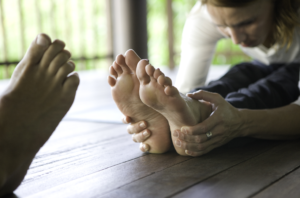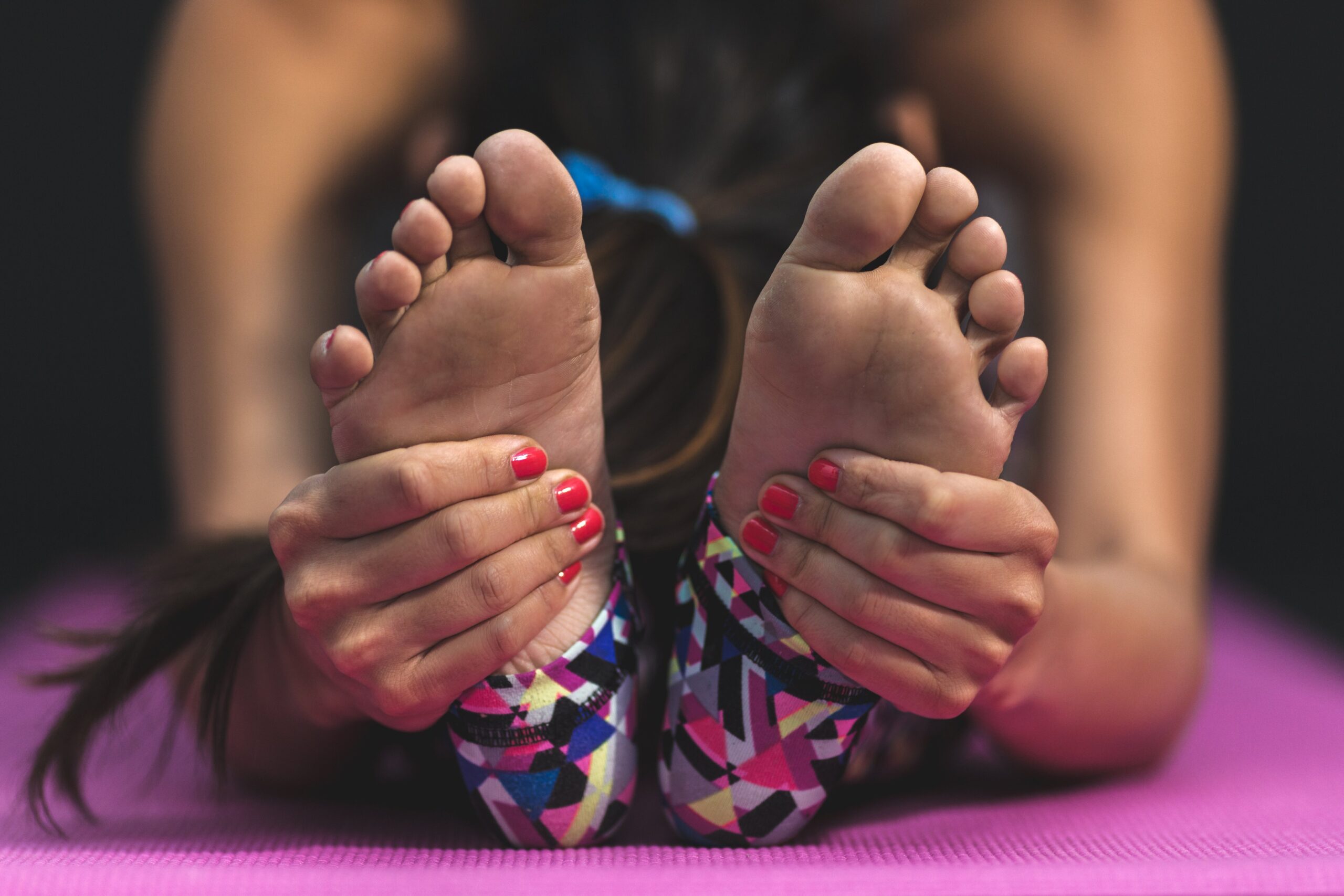FLAT FEET
Flat feet is a condition that affects many adults today. It not only complicates life, but also entails a lot of related problems, so it needs treatment. And one of the most effective techniques that can cope with an insidious pathology that deforms the foot is yoga https://www.julianalucky.com/post/10-top-yoga-books-for-kids with flat feet.
What is this disease, the reasons for its occurrence
 Deformation, in which the longitudinal and transverse arch of the feet becomes less pronounced, is precisely called flat feet. It is caused due to the fact that the osteoarticular and muscular apparatus of this part of the leg cease to function normally. Depending on how advanced the disease is, three degrees are distinguished. The first is mild, when the defect is rather cosmetic, the second is moderate, that is, strangers still do not notice it, but the patient is already experiencing pain – not only in the foot, but also in the ankle. Clubfoot and some heaviness alter gait. And at the last stage, the foot is completely deformed, having a negative effect on the entire musculoskeletal system.
Deformation, in which the longitudinal and transverse arch of the feet becomes less pronounced, is precisely called flat feet. It is caused due to the fact that the osteoarticular and muscular apparatus of this part of the leg cease to function normally. Depending on how advanced the disease is, three degrees are distinguished. The first is mild, when the defect is rather cosmetic, the second is moderate, that is, strangers still do not notice it, but the patient is already experiencing pain – not only in the foot, but also in the ankle. Clubfoot and some heaviness alter gait. And at the last stage, the foot is completely deformed, having a negative effect on the entire musculoskeletal system.
As for the varieties, there are also three of them. So, the longitudinal flatfoot is characterized by the fact that it is the longitudinal arch of the foot that flattens, the transverse one by the flattening of the transverse one (while the leg is slightly reduced in length). Mixed is a type of disease when both types are combined.
What is causing the problem? It can be congenital when there is not enough connective tissue, as well as because of its slenderness. The causes can also be trauma and paralysis, rickets. However, they together account for a rather small percentage of diseases: in more than 80% of cases, flat feet are caused by weakening of the muscles and ligaments of the arch of the foot due to standing work, excess weight, a passive lifestyle, etc. And asanas and special exercises involve just elimination of attenuation.
Yoga is an effective remedy for solving a problem
Most of the asanas involve using the feet to one degree or another. But there is also a special Iyengar complex, which offers yoga for flat feet. If you do all the exercises regularly, then in a maximum of six months the disease will go away.
The basic principle of yoga gymnastics exercises with flat feet is based on the correctness of the asana: much attention is paid to this, since it depends on it how quickly you can cope with the disease. However, it is worth remembering about detachment from the result: it is very important.
Classes are necessarily carried out barefoot – this is also the fundamental principle of yoga for flat feet. Before you start practicing, you will need to be patient and master tadasana. Its construction will teach you how to properly distribute weight and be in constant interaction with your energy channels.
In an upright position, you need to align your heels and toes; this is difficult for beginners, so they start with the index toes. You cannot lean only forward or on the heel, you need to keep the middle part of the sole raised. It takes a long time to master this position.
After that, work with fingers begins. On exhalation, they are spread out, the recommended execution time is daily. It will be difficult even for those who have already successfully mastered the first position, but gradually the small muscles of the metatarsus become more developed and allow this to be done – thus flat feet are prevented.
Also, from the main asana, an exit is made to another position: the ankles are raised, the hips and kneecaps are pulled up. Care must be taken that both legs receive the same load. Stretching and strengthening of the feet helps well. To stretch the instep, you need to place your hands near your heels, your knees should be raised, and the support goes to the insteps and arms. It also stretches and strengthens its yoga exercise, similar to the ballet one: from a standing position, it is done for each limb – they raise a leg, pull the toe up, and then towards oneself. Repeat with right and left feet, controlling the position.
After successfully mastering the preparatory complex, the complex of asanas is mastered; the technique of execution is required while standing.
The first asana assumes such a position of the body: the feet are one after the other, the heels are parallel. Inhale – rise on the heels, exhale – lower, repetition – 15 times. Next, you need to put the socks together, and the heels apart with an angle of 90 degrees, only rise on the toes, and lower on the heel, observing the sequence of inhalations and exhalations. The next exercise, which is part of the asana complex, involves lifting the heels off the floor in the basic position and twisting the feet towards each other. This is done 10 times.
Then you need to lean on the outer edge of the foot and transfer the weight from one toe to the other, starting with the little fingers: this is how you need to reach the inner edge. And the last exercise: feet are shoulder-width apart, the right one moves up. The thumb should be up, the rest down. After a few seconds, they change places. The same is repeated five times for each leg.
